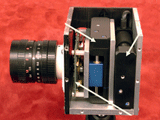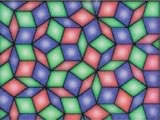Super-Resolution
Jitter Camera: The resolution of videos can be computationally enhanced by moving the camera and applying super-resolution algorithms. However, a moving camera introduces motion blur, which limits the quality of super-resolution. To overcome this limitation, we have developed a novel camera called the "jitter camera". The jitter camera produces shifts between consecutive video frames without introducing any motion blur. This is done by shifting the video detector instantaneously and timing the shifts to occur between pixel integration periods. The videos captured by the jitter camera are processed by an adaptive super-resolution algorithm that handles complex dynamic scenes in a robust manner producing a video that has a higher resolution than the captured one. (With Assaf Zomet and Shree K. Nayar). [Project Page]
Penrose Pixels: We present a novel approach to reconstruction based super- resolution that explicitly models the detector's pixel layout. Pixels in our model can vary in shape and size, and there may be gaps between adjacent pixels. Furthermore, their layout can be periodic as well as aperiodic, such as Penrose tiling or a biological retina. We also present a new variant of the well known error back-projection super-resolution algorithm that makes use of the exact detector model in its back projec- tion operator for better accuracy. Our method can be applied equally well to either periodic or aperiodic pixel tiling. (with Zhouchen Lin and Bennett Wilburn) [Project Page]

